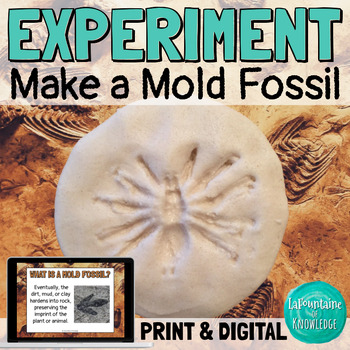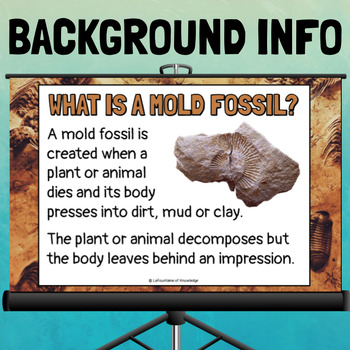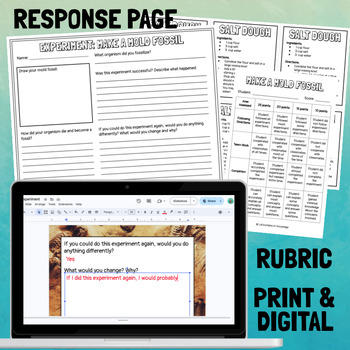Make a Mold Fossil Science Lab Experiment PRINT and DIGITAL
- PDF
What educators are saying
Also included in
- This bundle includes 10 hands-on science labs and activities all related to the Earth: rocks, fossils, minerals, crystals, tectonic plates, earthquakes, volcanoes, paleontology, etc. This bundle includes: Experiment: Modeling the Rock Cycle with StarburstExperiment: Modeling Tectonic Plates with GraPrice $22.20Original Price $37.00Save $14.80
Description
This paleontology activity walks students through a science experiment to create a mold fossil using salt dough.
This resource includes:
- teacher directions, discussion questions, and extension activities
- background information on what mold fossils are and how they form
- 11 slides of step by step instructions, with photos, to walk students through how to create their mold fossils.
- printable salt dough recipes
- a student response worksheet
- a scoring rubric
- a force copy link to a digital Google Slides version
Be sure to check out Make a Cast Fossil Science Experiment and STEM Challenge: Digging for Dinosaurs for more fossil fun!
Please follow my store here for more great resources!
You can also find me on Facebook, Instagram, and lafountaineofknowledge.com where you'll discover ideas, inspiration, and plenty of freebies! Or join my email list to get a monthly newsletter with exclusive FREE resources you can't get anywhere else!
Want free money to spend on Teachers Pay Teachers? Rate this product to earn some TpT credit! Leaving feedback helps us both out and takes less than a minute! Your support makes it possible for me to continue making and sharing great resources! Thank you!






